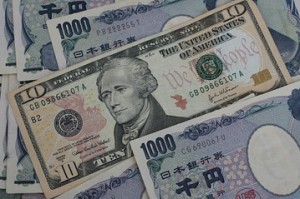 The yen retreated from one-month high against the US dollar, after it became clear that Russian President Vladimir Putin had ordered troops to return to their bases as military exercises concluded amid rising tensions in the pro-Russian Ukraine’s Crimea region.
The yen retreated from one-month high against the US dollar, after it became clear that Russian President Vladimir Putin had ordered troops to return to their bases as military exercises concluded amid rising tensions in the pro-Russian Ukraine’s Crimea region.
USD/JPY touched a session high at 101.95 at 06:05 GMT, after which the pair consolidated at 101.82, adding 0.36% for the day. Support was likely to be found at March 3rd low, 101.20, also the pairs weakest level since February 5, while resistance was to be encountered at February 28th high, 102.30.
The yen came under selling pressure after a report revealed that Russian President Vladimir Putin ordered troops to return to their bases, after military exercises near the border between Russia and Ukraine finished. The attractiveness of the Japanese currency as a safe-haven, which helped the yen to reach one month-high yesterday, diminished, even though troops still remain in Crimea.
Today the US Secretary of State is expected to visit Kiev. His visit comes after the leaders of G-7 nations said Russian actions are seen as clear violation of Ukraine’s territorial integrity, while at the same time the Russian Federation told the United Nations its intervention in Crimea region is legal.
“A military conflict has been avoided so far and the Ukraine situation has stabilized,” spurring some selling in the yen, said Akira Moroga, the manager of currency products at Aozora Bank Ltd. in Tokyo, cited by Bloomberg. “Expectations of a better U.S. jobs figure are likely to support the dollar.” The US will release jobs data for February, later this week.
The Japanese Statistics Bureau reported on Friday that consumer prices excluding fresh food rose 1.3% in January compared to a year ago, in line with analysts’ estimates and matching December’s increase, which was the highest since October 2008.
In February, Bank of Japan kept its pledge to expand the money supply by an annual 60 trillion yen to 70 trillion yen and announced Japan’s banks may borrow twice as much low-interest money than they previously did under a second facility.
Only 12% of economists in a Bloomberg survey conducted on February 6th forecast the central bank will add to stimulus this quarter.
The yen devalued 18% against the US dollar last year amid unprecedented central bank’s stimulus, the most since 1979, but has rebounded 3.8% this year after a rout in emerging markets, fueled demand for haven assets, including the Japanese currency.
Meanwhile, the US dollar capped the worst month in February since September even after Federal Reserve Chair Janet Yellen said the central bank will probably continue with its plan to gradually reduce the scale of monthly asset purchases. At the same time, policy makers will try to determine whether the weakness economy has recently demonstrated is due to temporal factors.
“Unseasonably cold weather has played some role,” she said in her testimony in front of the Senate Banking Committee on Thursday. “What we need to do, and will be doing in the weeks ahead, is to try to get a firmer handle on exactly how much of that set of soft data can be explained by weather and what portion, if any, is due to softer outlook.”
Yellen indicated that the Federal Reserve is abandoning its numerical threshold, that has linked any decision to increase borrowing costs to nation’s rate of unemployment. She also reiterated what the central bank has already said in a number of statements – that the scale back of monetary stimulus will continue at a “measured pace”, while the bond-purchasing program will likely be exited in the fall.
The greenback was supported yesterday after the Institute for Supply Management (ISM) reported that manufacturing activity in the United States expanded at a faster than projected pace in February, which eased concerns that economy may remain vulnerable. The corresponding PMI advanced to a reading of 53.2 last month from 51.3 in January, while analysts had expected that the index will climb less, to 52.0 in February. Values above the key level of 50.0 are indicative of expansion in activity.
Elsewhere, having touched a session low at 0.8910 at 3:45 GMT, AUD/USD climbed to 0.8945 at 7:20 GMT, gaining 0.10% for the day. Support was likely to be received at March 3rd low, 0.8891, while resistance was to be encountered at February 28th high, 0.8990.





